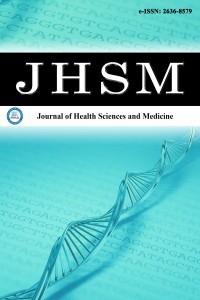
Journal of Health Sciences and Medicine
Yazarlar: ["Çağdaş ÖZGÖKÇE", "Aydın OÇAL", "Oya DEMİRCİ"]
Konular:-
DOI:10.32322/jhsm.1227049
Anahtar Kelimeler:Hysterectomy,Perinatal mortality,Cesarean section,Uterine rupture
Özet: Aim: There are not many studies that compared the uterine rupture cases pertaining to different trimesters of pregnancy in terms of the changes in relevant risk factors and fetomaternal outcomes. In this context, this study was carried out to comparatively analyze the cases who were diagnosed with complete uterine rupture and gave birth in the hospital where this study was conducted in terms of the relevant risk factors and fetomaternal outcomes. Material and Method: The population of this retrospective study consisted of patients who were diagnosed with complete uterine rupture and gave birth in our hospital between January 2015 and June 2022. Patients’ demographic characteristics, cesarean section, labor induction histories, and fetal and maternal outcomes were recorded. The patients included in this study were divided into two groups based on the trimester when the complete uterine rupture occurred as second- and third-trimester complete uterine rupture groups. The groups were compared in terms of fetal, maternal, and obstetric outcomes. Results: Out of the 56718 deliveries performed during the study period, a total of 27 complete uterine rupture cases, of whom 10 had second-, and 17 had third-trimester uterine rupture, were included in the study sample. Accordingly, the incidence of rupture was calculated as 0.047%. Of these 27 cases, 9 had re-pregnancy. Bilateral hypogastric artery ligation was performed in seven patients and six of these patients were in the third trimester rupture group. Of the 27 cases with complete uterine rupture, 19 had a cesarean section history. All 8 cases that did not have a cesarean section history had a complete uterine rupture in the third trimester. Conclusion: Complete uterine rupture is associated with adverse maternal and fetal outcomes. Fertility-sparing surgery (primary repair) is the first-line therapy. The prognosis of second-trimester uterine ruptures is more unfavorable compared to third-trimester uterine ruptures from the fetal point of view yet more favorable from the maternal point of view.